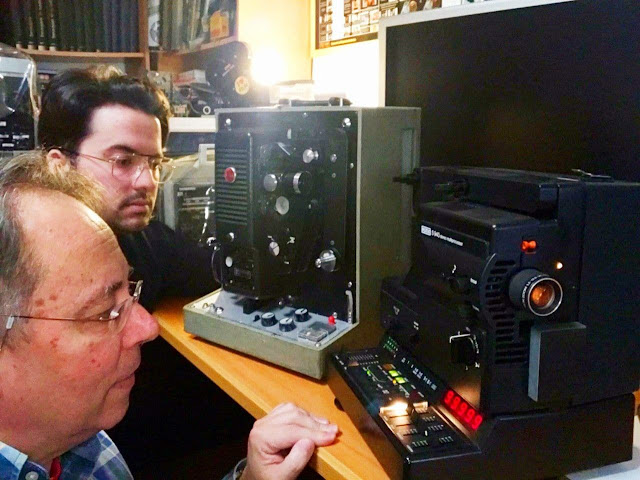In the eighth installment of ten parts, a digest of an article originally published in SilverGrain Classics , I write about my favorite models from two brands with special meaning for European filmmakers: Eumig and Noris.
Noris, from Germany, and Eumig, from Austria, were two very old ciné brands, founded in 1866 and 1921 respectively, but, unfortunately, both went bankrupt just before the collapse of Super-8, Noris so early as in sumer of 1980 (after several years in losses, caused by the sale below the cost price of Eumig projectors, its main competitor in Europe). Eumig factory was shut down in 1981.
In the early days of Super-8 sound magnetic stripe, the quality of sound obtainable could only be described as "adequate". Then, in 1974, Eumig introduced their first generation HQS (acronym of High Qualtiy Sound) projector. This, with a high-frequency response that was nearly flat up to about 8 kHz, was capable of recording and reproducing soundtracks that almost did sound "high quality".
 |
| Eumig 938 |
Very similar (with the same 15 V 150 W lamp) but without LED counter or Microcomputer is the Eumig 938, also with stereo sound. Original lens is a very interesting f 1.2 14-30 mm, with an unique (in Super-8) optical level system to avoid the Keystone effect!
 |
| Alex and me are very enthusiast about the Eumig 940 |
In 1975 came the first of a long series of Norisound machines: the Model 110, using a 12v direct-current control, with transistorized speed control, and having no hum problem of the Eumig range, Noris were able to provide real high quality sound that extended down into de deep bass as wall as up towards 10 kHz at the top end.
Following the initial success of model 110, a long series of improved and elaborated models followed: , such as the 310, 322 (twin track), 322, 332 Duo, 342 Stereo and finally de 400 Series.
 |
| Non-German Noris |
After the bankrupt, series 500 arrived to the market: excellent machines, but built in Japan by Yamawa, the joint venture between Fujifilm and Xerox.
My favorite Noris are the Norisound 342 Stereo and the Norisound 4100 Stereo. Part of the aesthetics and high technology of the high-end Noris, it was inherited by the wonderful Braun Visascustic.
The real Noris, made in Germany. are interesting machines for the Super-8 enthusiast for several reasons. The main argumet, es the rear sprung pressure gate (in the side of the lamp), so the focus no change if your film is done with different film stocks with not the same thickness in the film base: with the rear pressure pad the focus will remain constant.
I like of German-built Noris the overall feeling of quality about the construction and finish. But unthreading a partly-run film is not so easy. The film path is not closed in, but the magnetic-head pressure pad does not lift very far and it is difficult to persuade the film to slide sideways; extraction usually involves a bit of fiddling with a nail file, and unthreading is an operation best avoided.
An outstanding feature of the Norisound is its quietness of running, the quietess of all super-8 sound projectors. The motor and fan are almost noiseless, and the clicking sound from the engagement of the sound with the film is very subdued. In a sound projector, this absence of mechanical noise is a very strong point.
Very interesting too is the fast pull down, able to get more ligh with the very popular 12 V 100W with other machines with a 150 W lamp, because the unusually narrow shutter blades (practicable because of the very fast pull-down) make for good ligh efficiency.
Noris projectors were available optionally with some excellent lenses, as the Schneider Xenovaron f 1.3 12-30 mm or the superb f 1.1 Schneider Xenovaron 11-30 mm
 |
| Amazing Noris 4100 Stereo |
In this series of ten articles, a digest of the one published in the international magazine SilverGrain Classics, are described the most interesting projectors to buy, depending on the use they will be put to.







No hay comentarios:
Publicar un comentario